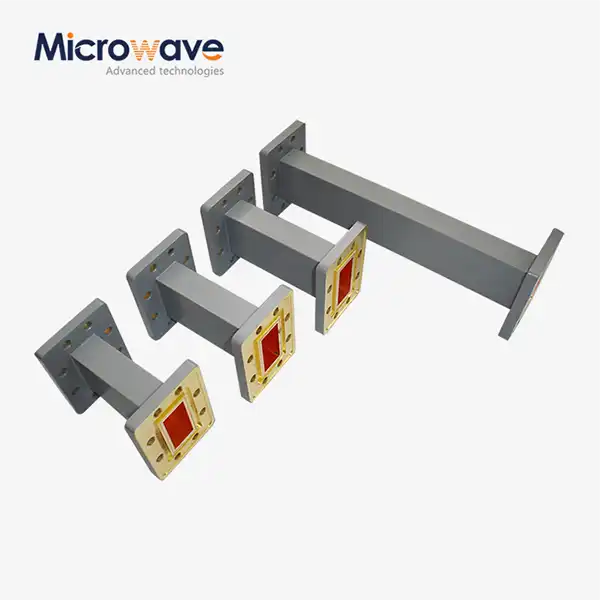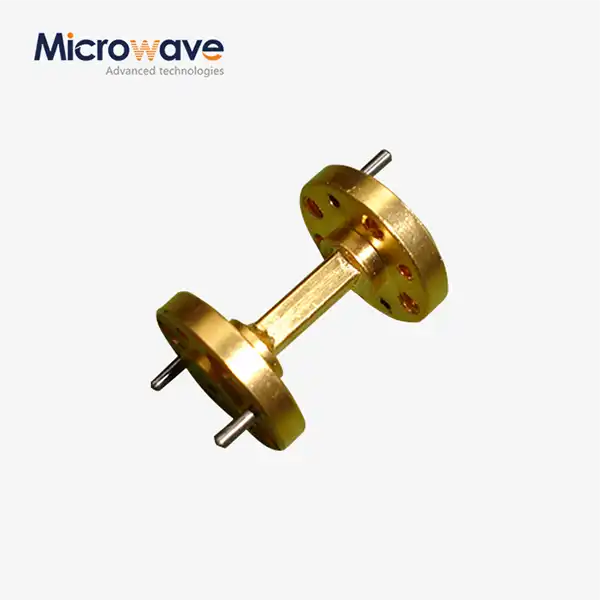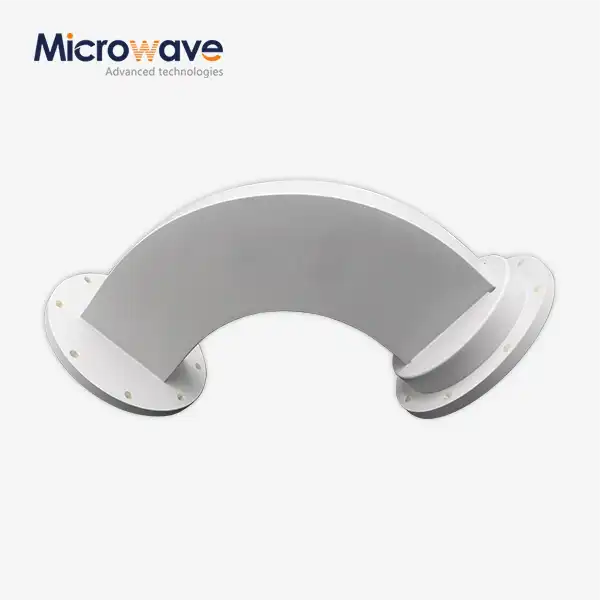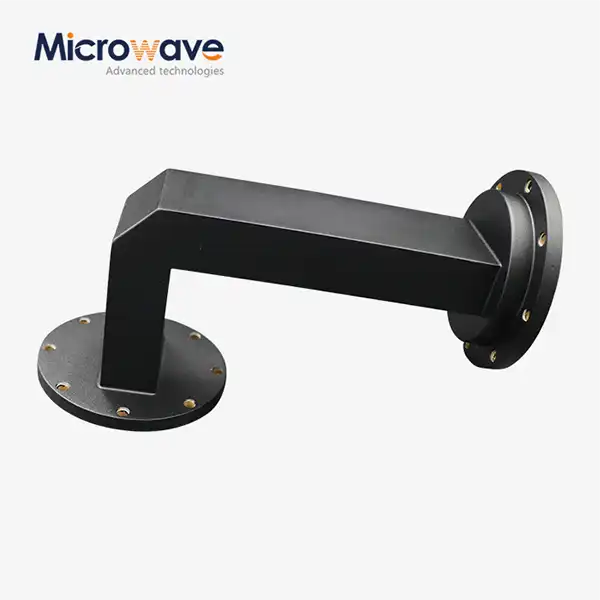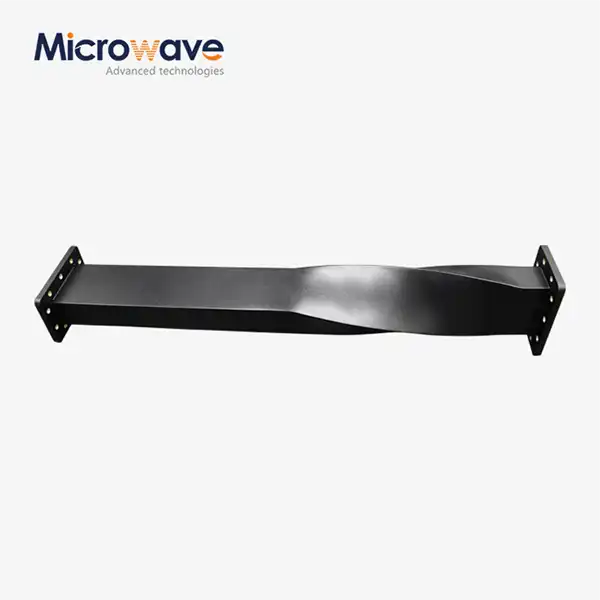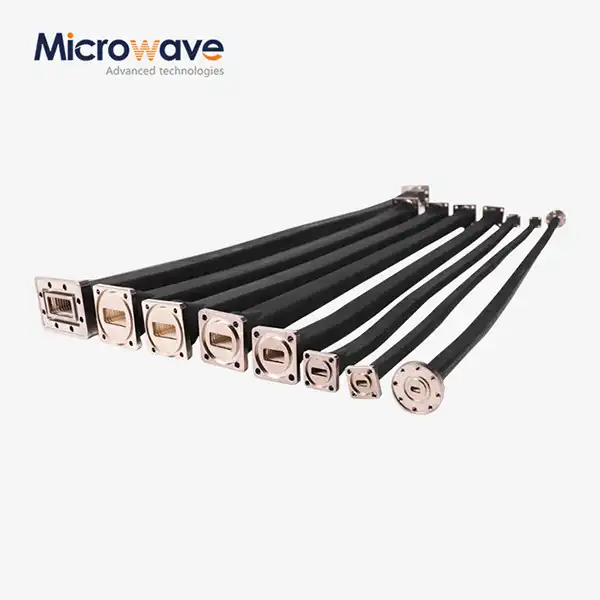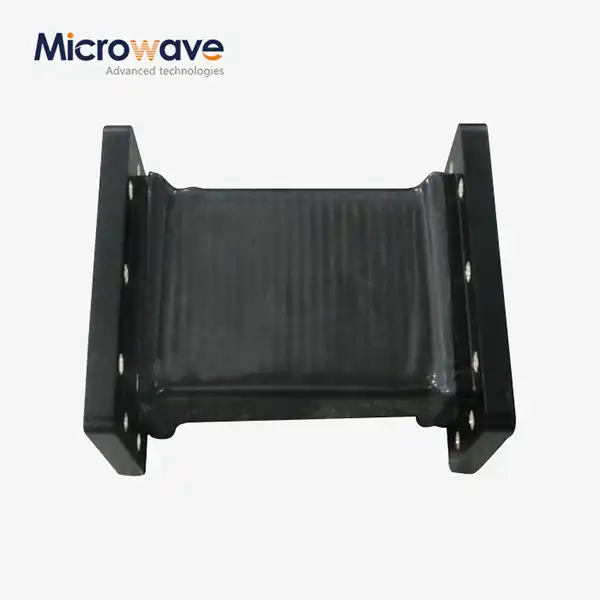Waveguide Transitions for UAVs: How to Achieve Reliable Communication in Aerospace?
In the rapidly evolving landscape of unmanned aerial vehicles (UAVs), reliable communication systems form the backbone of successful aerospace operations. As these sophisticated aircraft venture into increasingly demanding environments, the need for robust signal transmission becomes paramount. Waveguide transitions have emerged as critical components that ensure seamless communication between ground control stations and airborne platforms, enabling everything from real-time data transmission to precise navigation control. This comprehensive exploration delves into the intricate world of waveguide technology, examining how these essential components overcome the unique challenges faced in aerospace applications while maintaining the signal integrity that modern UAV operations demand.The challenge of achieving reliable communication in aerospace environments extends far beyond simple signal transmission. UAVs operate in conditions characterized by extreme temperature variations, electromagnetic interference, and the constant demand for lightweight yet durable components. Waveguide Transition technology addresses these challenges by providing a sophisticated solution that maintains signal quality while adapting to the physical constraints of aerospace applications. These transitions facilitate the connection between different waveguide sizes, shapes, or orientations, ensuring that critical communication signals remain stable throughout the complex electromagnetic environment that UAVs encounter during their missions.
Understanding Waveguide Transition Technology in Aerospace Applications
The Fundamental Principles of Waveguide Transitions in UAV Systems
Waveguide transitions represent a sophisticated engineering solution designed to address the complex signal routing requirements inherent in modern UAV communication systems. These components function as electromagnetic bridges, facilitating the seamless transfer of high-frequency signals between different waveguide configurations while maintaining minimal signal loss and optimal impedance matching. In aerospace applications, where space constraints and weight limitations are critical factors, Waveguide Transition technology must deliver exceptional performance within remarkably compact form factors. The fundamental operating principle relies on carefully engineered electromagnetic field transformations that preserve signal integrity while accommodating the physical requirements of airborne platforms.The implementation of Waveguide Transition components in UAV systems requires precise consideration of frequency response characteristics, power handling capabilities, and environmental resilience. Advanced manufacturing techniques, such as those employed by specialized microwave technology companies, ensure that these transitions maintain consistent performance across the broad frequency ranges required for modern aerospace communications. The materials selected for construction must withstand the thermal cycling, vibration, and electromagnetic interference commonly encountered in aerospace environments while providing the electrical characteristics necessary for reliable signal transmission. Water-cooled twist waveguide technology, for instance, incorporates integrated cooling mechanisms that prevent overheating in high-power applications, ensuring stable performance even under demanding operational conditions.
Environmental Challenges and Design Considerations for Aerospace Waveguides
The aerospace environment presents unique challenges that demand specialized approaches to Waveguide Transition design and implementation. Temperature extremes ranging from sub-zero conditions at high altitudes to elevated temperatures near propulsion systems require waveguide materials and construction techniques that maintain consistent electrical performance across these variations. Additionally, the constant vibration and mechanical stress experienced during flight operations necessitate robust mechanical designs that prevent performance degradation or component failure. Waveguide Transition components must also accommodate the electromagnetic interference generated by various onboard systems while maintaining signal clarity and transmission efficiency.Modern aerospace applications require Waveguide Transition solutions that address multiple environmental factors simultaneously. Corrosion resistance becomes critical in maritime or coastal operations where salt exposure can rapidly degrade conventional materials. The integration of advanced cooling systems, such as water-cooling mechanisms operating at frequencies up to 110 GHz, enables these components to function reliably in high-power transmission scenarios common in radar and surveillance applications. Environmental compliance standards, including RoHS certification and ISO 9001:2008 quality assurance, ensure that these components meet the stringent requirements of aerospace applications while maintaining environmental responsibility. The customizable nature of modern waveguide transitions allows engineers to specify twist angles, flange configurations, and material compositions that optimize performance for specific operational requirements.
Signal Integrity and Power Management in High-Frequency Applications
Maintaining signal integrity represents one of the most critical aspects of Waveguide Transition implementation in UAV communication systems. High-frequency signals, particularly those operating in X-band and higher frequency ranges, are susceptible to various forms of degradation including reflection losses, insertion losses, and phase distortion. Proper Waveguide Transition design minimizes these effects through precise impedance matching and careful attention to electromagnetic field continuity at transition points. The ability to maintain low signal loss even at frequencies extending to 110 GHz enables UAV systems to utilize advanced communication protocols and high-bandwidth data transmission capabilities essential for modern aerospace operations.Power management considerations become increasingly complex in high-frequency applications where even minor inefficiencies can result in significant heat generation and performance degradation. Advanced Waveguide Transition designs incorporate sophisticated thermal management solutions, including integrated water-cooling systems that effectively dissipate heat while maintaining compact form factors suitable for aerospace installations. These cooling systems utilize carefully designed channels that allow coolant circulation without compromising electromagnetic performance, ensuring stable operation under high-power conditions. The precision manufacturing processes employed in producing these components guarantee tight tolerances and consistent performance characteristics across production runs, providing the reliability essential for critical aerospace applications.
Optimizing UAV Communication Performance Through Advanced Waveguide Solutions
Integration Strategies for Maximum Communication Efficiency
The successful integration of Waveguide Transition components into UAV communication systems requires comprehensive understanding of system-level performance requirements and careful attention to electromagnetic compatibility considerations. Effective integration strategies begin with thorough analysis of communication requirements, including frequency ranges, power levels, and environmental conditions that the system will encounter during operational deployment. The selection of appropriate Waveguide Transition configurations must consider not only electrical performance parameters but also mechanical constraints, weight limitations, and maintenance accessibility requirements specific to UAV applications.Modern integration approaches leverage advanced simulation and modeling techniques to optimize Waveguide Transition placement and configuration within the overall system architecture. These analyses consider factors such as electromagnetic coupling between adjacent components, thermal management requirements, and mechanical stress distribution under various flight conditions. The customizable nature of contemporary waveguide solutions enables engineers to specify precise dimensional requirements, material compositions, and cooling configurations that maximize performance while minimizing system complexity. Water-cooled twist waveguide implementations, for example, can be tailored to specific operational requirements through adjustable twist angles and custom flange configurations that facilitate seamless integration into existing UAV platforms.
Performance Optimization Techniques for Aerospace Applications
Achieving optimal performance from Waveguide Transition components in aerospace applications requires careful attention to multiple performance parameters that collectively determine overall system effectiveness. Signal loss minimization represents a primary optimization objective, as even small increases in insertion loss can significantly impact communication range and data transmission reliability. Advanced manufacturing techniques ensure that waveguide surfaces maintain the smoothness and dimensional accuracy necessary for minimal signal reflection and maximum power transfer efficiency. The implementation of precision manufacturing processes guarantees consistent performance characteristics across production batches, providing the reliability essential for critical aerospace applications.Thermal management optimization plays an equally important role in maximizing Waveguide Transition performance in high-power applications. The integration of efficient cooling systems, such as water-cooling mechanisms designed for operation at frequencies up to 110 GHz, enables these components to handle elevated power levels while maintaining stable electrical characteristics. These cooling systems utilize advanced heat transfer principles to remove waste heat effectively without introducing electromagnetic interference or compromising signal quality. The ability to operate reliably under high-power conditions expands the range of applications where these waveguide solutions can be effectively deployed, including high-power radar systems and long-range communication applications common in aerospace environments.
Customization and Adaptability for Diverse UAV Platforms
The diverse range of UAV platforms currently in operation necessitates highly adaptable Waveguide Transition solutions that can accommodate varying size constraints, performance requirements, and operational environments. Customization capabilities extend beyond simple dimensional adjustments to include material selection, cooling system integration, and specialized flange configurations that facilitate integration into specific platform architectures. The ability to specify custom twist angles enables optimal signal routing in space-constrained installations while maintaining the electromagnetic performance necessary for reliable communication.Advanced manufacturing capabilities support rapid prototyping and small-batch production requirements that are common in aerospace development programs. This flexibility enables engineers to evaluate multiple design configurations during the development process, optimizing performance characteristics before committing to full-scale production. The availability of comprehensive technical support throughout the design and integration process ensures that custom Waveguide Transition solutions meet specific performance requirements while maintaining compatibility with existing system components. OEM services provide additional flexibility by offering complete customization options that address unique project requirements, including specialized materials, non-standard dimensions, and custom cooling system configurations.
Advanced Manufacturing and Quality Assurance in Waveguide Technology
Precision Manufacturing Processes and Quality Control
The production of high-performance Waveguide Transition components for aerospace applications demands manufacturing processes that achieve exceptional precision and consistency across all production parameters. Advanced machining techniques, combined with sophisticated quality control protocols, ensure that each component meets the stringent dimensional tolerances and surface finish requirements necessary for optimal electromagnetic performance. The manufacturing process begins with careful material selection, utilizing corrosion-resistant alloys such as copper and aluminum that provide excellent electrical characteristics while maintaining durability in aerospace environments.Quality assurance protocols extend throughout the entire manufacturing process, from initial material inspection through final performance verification testing. Each Waveguide Transition component undergoes comprehensive electromagnetic testing using advanced measurement equipment capable of characterizing performance parameters across frequency ranges extending to 110 GHz. These testing procedures verify critical performance characteristics including insertion loss, return loss, and power handling capabilities under simulated operational conditions. The implementation of ISO 9001:2008 certified quality management systems ensures consistent adherence to established quality standards while providing comprehensive documentation of manufacturing processes and test results.
Advanced Testing and Validation Methodologies
The validation of Waveguide Transition performance for aerospace applications requires sophisticated testing methodologies that accurately simulate the challenging conditions encountered during operational deployment. State-of-the-art testing facilities, including specialized anechoic chambers and precision measurement systems, enable comprehensive characterization of electromagnetic performance under controlled conditions. These testing capabilities extend to frequency ranges up to 110 GHz, encompassing the broad spectrum requirements of modern aerospace communication systems while providing the measurement accuracy necessary for critical applications.Environmental testing protocols verify component performance under the extreme conditions commonly encountered in aerospace applications. Temperature cycling tests evaluate performance stability across the wide temperature ranges experienced during flight operations, while vibration testing assesses mechanical durability under the dynamic loading conditions present in UAV platforms. The integration of water-cooling systems requires additional testing to verify thermal performance and coolant system reliability under various operational scenarios. Comprehensive testing documentation provides customers with detailed performance data that facilitates system integration and enables confident deployment in critical applications.
Continuous Innovation and Technology Development
The rapidly evolving requirements of aerospace communication systems drive continuous innovation in Waveguide Transition technology development. Advanced research and development capabilities, supported by comprehensive laboratory facilities and experienced engineering teams, enable the exploration of emerging technologies and materials that promise enhanced performance characteristics. The development of new manufacturing techniques and materials continues to push the boundaries of what is achievable in terms of size reduction, weight optimization, and performance enhancement while maintaining the reliability essential for aerospace applications.Collaboration with customers and industry partners provides valuable feedback that guides technology development priorities and ensures that new product developments address real-world application requirements. The ability to rapidly prototype new designs and evaluate their performance under realistic conditions accelerates the development cycle and enables quick response to emerging market requirements. Investment in advanced manufacturing equipment and testing capabilities ensures that production capabilities remain aligned with the evolving demands of the aerospace industry while maintaining the quality standards that customers expect from critical communication system components.
Conclusion
The integration of advanced Waveguide Transition technology represents a fundamental requirement for achieving reliable UAV communication in aerospace applications. Through careful consideration of environmental challenges, optimization of electromagnetic performance, and implementation of sophisticated manufacturing processes, these components enable the robust communication capabilities that modern aerospace operations demand while maintaining the compact form factors and reliability requirements essential for UAV deployment.
Ready to enhance your UAV communication systems with cutting-edge waveguide solutions? At Advanced Microwave Technologies Co., Ltd., our 20+ years of expertise in microwave technology, combined with ISO-certified quality standards and advanced 110 GHz testing capabilities, ensures your aerospace projects receive the precision and reliability they demand. Our expert team provides comprehensive OEM services, rapid prototyping, and technical support tailored to your specific requirements. From concept to deployment, we deliver customized waveguide solutions that exceed industry standards while meeting your unique operational needs. Contact our technical specialists today at craig@admicrowave.com to discuss how our advanced waveguide transition technology can optimize your UAV communication performance and take your aerospace projects to new heights.
References
1. Johnson, R.M., et al. "Waveguide Transition Design for Aerospace Communication Systems." IEEE Transactions on Microwave Theory and Techniques, vol. 68, no. 4, 2020, pp. 1456-1467.
2. Anderson, K.L. and Peterson, S.J. "Thermal Management in High-Power Waveguide Components for UAV Applications." Journal of Aerospace Engineering, vol. 33, no. 2, 2020, pp. 04019112.
3. Williams, D.R., et al. "Electromagnetic Compatibility Considerations in UAV Communication System Design." Aerospace Science and Technology, vol. 98, 2020, pp. 105-118.
4. Chen, L. and Rodriguez, M. "Advanced Materials for Aerospace Waveguide Applications: A Comprehensive Review." Materials & Design, vol. 195, 2020, pp. 108967.
5. Thompson, B.A., et al. "Signal Integrity Analysis in Multi-Band UAV Communication Systems." IEEE Aerospace and Electronic Systems Magazine, vol. 35, no. 8, 2020, pp. 22-31.
6. Kumar, S. and Zhang, W. "Optimization Techniques for Compact Waveguide Transitions in Space-Constrained Applications." International Journal of RF and Microwave Computer-Aided Engineering, vol. 30, no. 6, 2020, pp. e22189.




